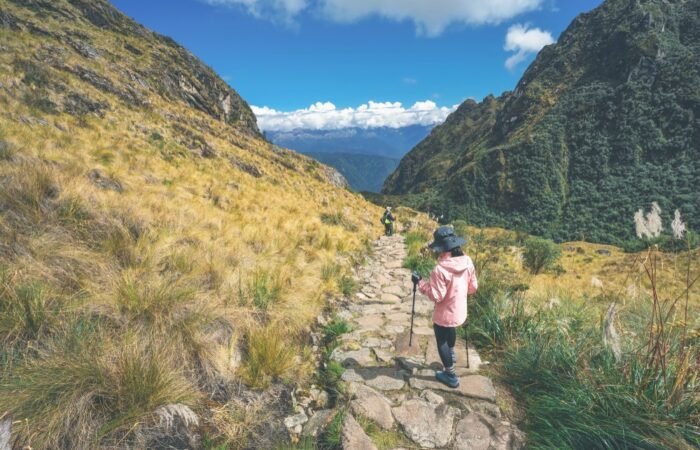

It is located about 4 km (15 minutes) northeast of the city of Cusco on a paved road. This place of worship is located in what today is known as the Socorro hill and has an area of 3,500 square meters.
To reach Q’enqo one can take any City Tour (Pull) of any travel agency (almost all of them offer this service), on foot, it takes 50 minutes from the center of the city of Cusco, in this case it can be done using initially the route to Sacsayhuaman.
What is left today of Q’enqo archeological complex are carved rocks that couldn´t be destroyed by the Spanish; there is little left of the paths and aqueducts, as well as of the enclosures, the deposits or the liturgical baths, besides the great layer of gold that illuminated the whole place.
Q’enqo was possibly used by the Incas as a worship center; its passages, that resemble a labyrinth, have in their flanks several channels in the form of Amarus (snakes), through which ran the blood of animal sacrifices- that were usually the most beautiful and unique; maybe this was the reason that the black animals were the chosen ones. Some chroniclers like Juan de Betanzos describe it as “a savage act committed by the Incas to sacrifice not only animals, but also newborns that possessed special beauty; according to the Incas, these beings were born beautiful in order to join the gods”.
Q’enqo has a sacrifice room in one of its underground chambers, where a large rock stands out, that according to chroniclers, was covered in gold. In the upper part of the chamber you can see a hole, which was exactly above the said rock. The light of the moon penetrated through this hole, radiating through the golden layer, illuminating the whole place. Some historians claimed that in Q’enqo lies the tomb of the Inca Pachacuteq, the most important of all.
The sets that we will describe next were undoubtedly very important sanctuaries for Incas. In spite of the destruction that this complex underwent during the colony- which can be appreciated at the moment inside it- it is still impressive and colossal.
It is a subterranean chamber. It is the lower portion of a large rock, so that floors, ceilings, walls, tables and cupboards are carved in a single gigantic rock. It is said that this underground chamber could have been used to embalm the dead bodies of people of noble lineage, also as a sacrifice place of humans and animals such as llama. Formerly, the sacrifice rock was covered in gold.
The Intiwatana is situated in the superior part of the great rock, constituted of 2 stone prominences of cylindrical shape that rise upright on a quasi-elliptical pedestal, all in situ, carved on the top of the rock. The use of Intiwatanas (where the sun is tied) during the Inca times is still a mystery. It is presumed that it was a kind of astronomical observatory, which the “amautas” (maestros) used to measure the time, to establish the seasons, determine the solstices and equinoxes and also as a shrine, where they worshipped the sun, the moon and the stars.
This is on the large rock and near the Intiwatana. The zigzag canal starts from a small hole and moves down in an inclined plane and broken line, which then branches off; one of these branches led the liquid to the underground Chamber or Sacrifice Room (according to the Cusqueño historian Victor Angles). The liquid could be enshrined chichi or blood of beings sacrificed for the gods.
This is a huge semi-circular area of a length of 55m., with 19 incomplete niches distributed along the wall. During the Inca time, this place was a temple for public ceremonies. In front of the free area there is a large stone block 6 m. high, resting on a solid rectangular pedestal. It has niches spread around the amphitheater as seats, but according to recent research, it is very likely that actually these niches have been the foundation of a great wall, to show the representation of an entity which they worshiped.
Hours: Monday to Sunday: 7:00 to 18:00
Price: The entry to Q´enqo is included in the Tourist Ticket
Q'enqo Archaeological Complex
by Peru Hike